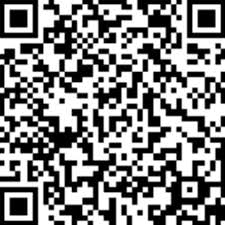While the QR code has been present for years in Asia, it has remained dormant in the Netherlands. Until corona. Since then, applications have been flooding in. A QR code is a two-dimensional bar code that was invented in 1994 in Japan. It is essentially a link to information on a website or in an app, a piece of text or an email address, contact information such as a text message, or an invoice that may be paid in one transaction. Not all cubes or dashes are required to represent the data. That is why they sometimes include a business logo. The iDeal payment solution’s logo is an illustration of this. You may be surprised that QR codes are rapidly gaining popularity. After all, they’ve been seen for years. The issue was simply that nothing was being done with it. However, in Asia people order groceries trough QR codes while they sit in the subway on the way home. Another example is that in Japan there are even QR codes on tombstones with last messages of people who passed away. What I am trying to say is that while in Asia the QR code is very common, in Europe we just start to realize the ease and efficiency of QR codes.
The QR code
So how does a QR code work? Even though the QR code is like the linear barcodes seen on goods in stores, it offers four significant advantages:
- It can store a huge amount of data.
- It is not limited to paper; it may be scanned from a screen as well.
- It is accessible even if a section of the code is broken.
- It is more secure since data can be encrypted.
Whenever a QR code is scanned, the horizontal and vertical patterns in the matrix are decoded and transformed to a string of characters by the software on your smartphone. Because QR codes include additional data, they enable encryption, which is advantageous for safe payment processing.
Why now and what are more possible applications?
Finally, the digital vaccination and testing certificate established the QR code as a permanent landmark. Almost everyone felt compelled to familiarize themselves with it. This expertise paves the door for a wide variety of applications. Of course, we saw that in the catering industry the QR code already made its appearance because of covid 19, however there are many more possible applications. Consider education, where the QR code may serve as a gateway to more information on class subjects.
For tourists, QR codes, will increasingly serve as the jumping-off point for their activities. Not with a basic walking map, but with visuals and music that accompany you on your journey. For museums, just providing their location and admission prices is no longer sufficient. Additionally, tourists want to know whether the establishment is crowded, if they can make reservations, and how to get there. Pet owners may attach a QR code to their dog’s or cat’s collar with their contact information in case it runs away. A secret message may be disguised behind a QR code used as a tattoo. Through covid-19, the QR code has already established a footing in healthcare. This is only going to grow as appointments and research become more prevalent.
The QR code can make a lot of processes and experiences much more efficient. Where do you see the QR code as a possible solution? And is the QR code here to stay?


